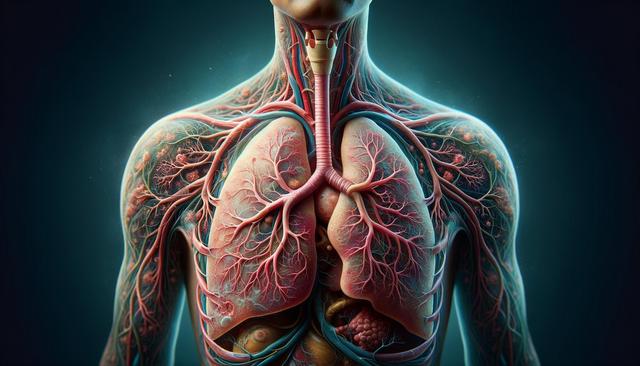What is COPD?
Chronic Obstructive Pulmonary Disease, commonly referred to as COPD, is a long-term lung disease that makes it difficult to breathe. It primarily includes two conditions: chronic bronchitis and emphysema. In chronic bronchitis, the airways become inflamed and produce excessive mucus, leading to coughing and difficulty breathing. Emphysema involves damage to the alveoli, the tiny air sacs in the lungs, which reduces the surface area for oxygen exchange. COPD is typically caused by long-term exposure to irritating gases or particulate matter, most commonly from cigarette smoke. However, environmental factors and genetic predispositions can also contribute to the development of the condition.
Although COPD is a serious and progressive illness, early diagnosis and appropriate management can significantly improve quality of life. Individuals with persistent respiratory symptoms such as chronic cough, shortness of breath, or frequent respiratory infections should seek medical evaluation. Diagnosis is usually confirmed through a breathing test called spirometry, which measures how much air you can exhale and how quickly.
Symptoms and Progression
The symptoms of COPD can vary depending on the stage of the disease and the individual. In the early stages, people may only notice mild symptoms that are often mistaken for a common cold or aging. Common symptoms include:
- Chronic cough with mucus production
- Shortness of breath, especially during physical activities
- Wheezing
- Chest tightness
- Frequent respiratory infections
As the disease progresses, these symptoms become more severe and persistent. Patients may experience fatigue, unintended weight loss, and a reduced ability to perform daily activities. Exacerbations, or flare-ups, can occur, during which symptoms suddenly worsen and may require hospitalization. These exacerbations can significantly impact lung function if not managed promptly.
Understanding the progression of COPD is important for both patients and caregivers. Medical professionals often categorize the condition into stages based on spirometry results and symptom severity, which helps guide treatment decisions and long-term care plans.
Treatment Options and Lifestyle Adjustments
While there is currently no cure for COPD, a range of treatments can help manage symptoms and enhance quality of life. The foundation of COPD treatment includes:
- Bronchodilators: Medications that relax the muscles around the airways, making breathing easier
- Inhaled corticosteroids: Reduce inflammation in the airways
- Combination inhalers: Contain both bronchodilators and steroids for added benefit
- Oxygen therapy: For individuals with low blood oxygen levels
- Pulmonary rehabilitation: A structured program of exercise, education, and support
In addition to medical treatments, lifestyle changes play a critical role. Quitting smoking is the single most important step individuals can take to slow the progression of COPD. Maintaining a healthy diet, engaging in regular physical activity, and avoiding environmental pollutants are also beneficial. Patients should work closely with healthcare providers to develop a personalized treatment plan that addresses their unique needs and lifestyle.
The Role of Prevention and Early Detection
Preventing COPD or detecting it early can significantly reduce the burden of the disease. Because tobacco smoke is the leading cause, smoking cessation programs are crucial in prevention efforts. Public health campaigns and education about the dangers of smoking have contributed to declining rates of COPD in some regions. However, other risk factors should not be overlooked. Occupational exposure to dust, fumes, and chemicals, as well as indoor air pollution from cooking fuels, can also contribute to the development of the disease.
Individuals with a family history of COPD or those exposed to risk factors should be proactive in monitoring their lung health. Regular check-ups and early spirometry testing can lead to earlier diagnosis, allowing for timely interventions that may slow disease progression. Vaccinations against respiratory infections, such as influenza and pneumonia, are also recommended to prevent complications in individuals with or at risk for COPD.
Raising awareness about COPD and encouraging early screening is essential for reducing the global impact of the disease. Health professionals, caregivers, and communities all play a role in promoting lung health and supporting those affected.
Living with COPD: Daily Management and Support
Managing COPD on a daily basis requires a comprehensive approach that includes medical treatment, lifestyle adjustments, and emotional support. Individuals living with COPD often face challenges in performing routine tasks, which can lead to feelings of frustration and isolation. Building a strong support system, both medically and socially, is key to maintaining a good quality of life.
Strategies for daily management include:
- Adhering to prescribed medications and using inhalers correctly
- Monitoring symptoms and recognizing signs of exacerbation
- Staying active with exercises tailored to individual capabilities
- Participating in support groups or counseling
Access to specialized care, such as respiratory therapists and pulmonary rehabilitation programs, can provide valuable guidance and motivation. Family members and caregivers also play an important role by offering encouragement, helping with medical appointments, and assisting with household tasks when needed.
It’s also beneficial to maintain a positive outlook and focus on achievable goals. While living with COPD involves challenges, many individuals find ways to adapt and enjoy fulfilling lives through consistent self-care and support from their healthcare team.




Leave a Reply